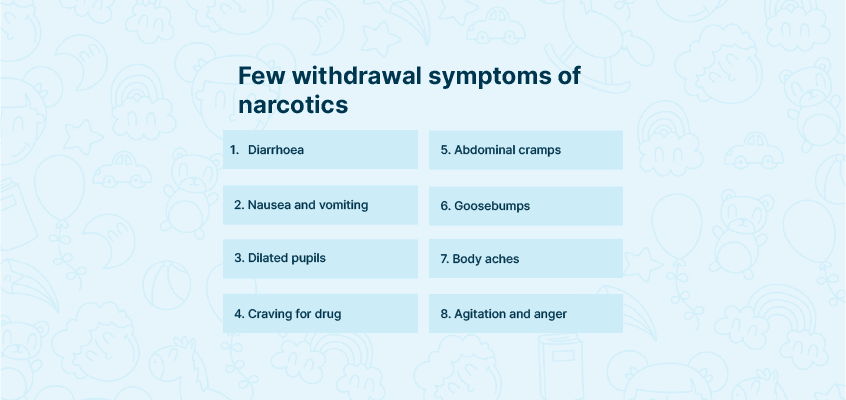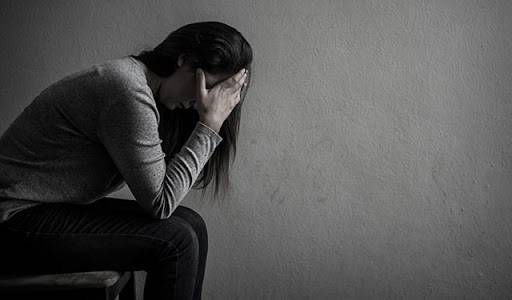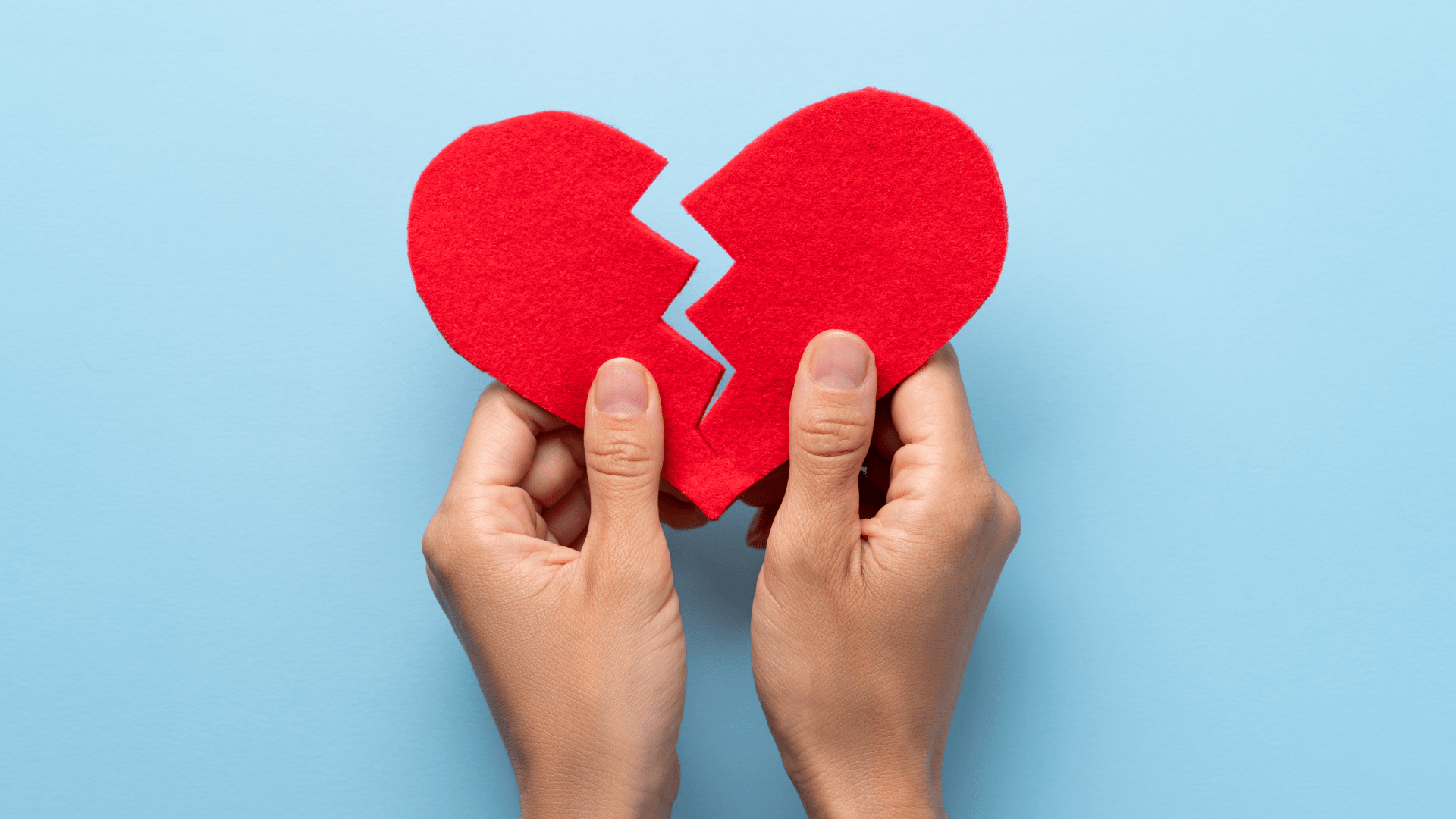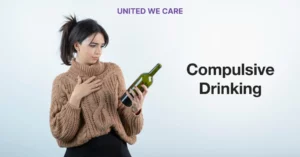Introduction
We all have been prescribed painkillers at some point in our lives. Doctors prescribe opioid painkillers – also called narcotics – to around 20%. The most commonly used narcotics are morphine, codeine, hydromorphone, oxycodone, heroin, methadone, and fentanyl. They pose no danger if strictly taken per a doctor’s prescription, but problems arise when people use them as a drug to get a high and relaxed feeling. If you try to discontinue it once your body has gotten used to it, you experience narcotics withdrawal symptoms. We will learn how to manage them in this article.
Our Wellness Programs
What is drug addiction?
Compulsive drug-seeking and usage – despite harmful consequences – characterise drug addiction.
Look out for these red flags to check if you are addicted to narcotics:
- You are aware that you are taking a higher dose than prescribed.
- You cannot cut down or control the urge to take them.
- You take narcotics just for a euphoric feeling, even when not in pain.
- You find yourself waiting for the next dose.
- You experience withdrawal symptoms when you try to stop them.

Opioids are the most commonly abused drug class, with nearly 15.6 million illicit opioid users worldwide. It is also a leading cause of death, as evidenced by statistics revealing about 500,000 deaths from narcotic overdose between 2000 and 2015.
Drug addiction is treatable. Effective medications and support groups can help people stop using drugs and maintain a drug-free life. Do not stop taking them abruptly, as it might result in life-threatening consequences. Your physician will slowly taper the dose and monitor and help with your narcotic withdrawal symptoms.
Looking for services related to this subject? Get in touch with these experts today!!
Experts

Banani Das Dhar

India
Wellness Expert
Experience: 7 years

Devika Gupta

India
Wellness Expert
Experience: 4 years

Trupti Rakesh valotia

India
Wellness Expert
Experience: 3 years

Sarvjeet Kumar Yadav

India
Wellness Expert
Experience: 15 years
Withdrawal symptoms of narcotics
Opioids bind to specific central nervous system receptors and block pain messages to the brain, thus providing pain relief and a feeling of well-being. Opioid addiction happens quickly, and the person experiences withdrawal symptoms if they stop taking narcotics once the body gets used to it.
Narcotic withdrawal symptoms appear within a few hours of discontinuing the drug and may last from a few days to several weeks. Two factors determine the severity and type of narcotic withdrawal symptoms, and these are: (a) how long the user was on it and (b) for how long they have discontinued using it.
These are some common narcotic withdrawal symptoms:
- Diarrhoea
- Nausea and vomiting
- Dilated pupils
- Craving for drug
- Abdominal cramps
- Goosebumps
- Body aches
- Agitation and anger
- Yawning
- Watery eyes
- Difficulty sleeping
- Fast heartbeats
- High blood pressure
- Hallucinations
Ten tips for managing withdrawal symptoms from narcotics:
Treatment and management of withdrawal symptoms of narcotics substances vary according to the severity of the symptoms.
Doctors use the COWS (Clinical Opioid Withdrawal Scale) assessment for opioid withdrawal to determine the severity of opioid withdrawal.
If you are planning to come off of narcotics yourself or need medical help, these ten tips will help manage the withdrawal symptoms:
- If you have decided to withdraw on your own, it is vital to know beforehand that the symptoms, though not life-threatening, can be very uncomfortable. It is a good idea to keep your physician and a close one informed about your plans to help in case of an emergency and keep you motivated and prevent relapse.
- You will likely experience diarrhoea and vomiting, so ensure you adequately hydrate yourself and drink electrolyte solutions to prevent dehydration. If required, you can also take specific medicines to control diarrhoea and combat the symptoms of nausea and vomiting.
- Muscle cramps, body aches, and fatigue are also common. Take adequate rest, and you may also take ibuprofen to relieve the symptoms, but remember to take only the minimum amount required and never overdose.
- Keep your mind occupied, engaged, and distracted by listening to music, watching movies, or indulging in any activity that makes you happy. It will increase your body’s endorphins and reduce the craving to go back on narcotics.
- It can be overwhelming, difficult, and dangerous to go through withdrawal alone.
Furthermore, it is always better to seek support from medical professionals or detox facilities, so they can make a personalised treatment plan for you and make the withdrawal process easy and successful. - Joining support groups like Narcotics Anonymous is very helpful in getting you through this challenging phase and preventing relapse.
- Look at how your doctor can help you with medically-assisted narcotics withdrawal. Your doctor can start you on methadone, which prevents withdrawal symptoms and reduces drug cravings. It would be best if you were under medical surveillance while on methadone. There are also specialised Methadone Clinics.
- Buprenorphine is another drug recommended for the treatment of opioid withdrawal, and it shortens the detoxification period and eases withdrawal symptoms.
- Clonidine is a medication to relieve withdrawal symptoms like anxiety, agitation, and muscle aches.
- Counselling and support groups provide the much-needed motivation and push required post-recovery to prevent going back to opioid abuse.
Conclusion
Narcotics are very effective and helpful for relieving severe pain, like post-surgical pain or injuries, but their high dependence potential is disadvantageous. They provide a feeling of euphoria and well-being, which becomes addictive for the patient, and they continue taking opioids even when they do not need them for pain.
Prescription drug abuse is a genuine and concerning issue worldwide. The long-term usage of narcotics alters the way neurons and brain circuits function. Drug tolerance is also widespread with narcotics use, so you need to increase the dosage to get the same effect over time. It is difficult to come off opioids once your body gets used to them. Narcotic withdrawal symptoms are so uncomfortable that it is widespread to give up and continue taking opioids to eliminate those unpleasant symptoms. However, you can withdraw from narcotics successfully with solid willpower, a support system, and medical help.
Visit test.unitedwecare.com for more tips and helpful suggestions.















